You know how you can get completely sucked into those two-sentence horror stories on Reddit? I definitely fell down that rabbit hole hard. According to THGMWriters, these bite-sized horror pieces have become one of the most engaging forms of digital storytelling – and honestly, there’s something addictive about these tiny horror stories. Maybe it’s because we can all relate to wanting a quick scare without committing to a whole novel.
I remember stumbling across my first two sentence horror story late one night – something about a child’s imaginary friend – and I couldn’t sleep for hours afterward. That’s when I realized the incredible power these tiny tales hold over our imagination. The best two sentence horror stories get under your skin through fears we all share rather than cheap shock value, and horror stories in 2 sentences can deliver more genuine terror than entire novels when they nail it perfectly.
Table of Contents
-
What Makes a Two Sentence Horror Story Truly Terrifying
-
25 Bone-Chilling Two Sentence Horror Stories
-
Childhood Innocence Corrupted (Stories 1-5)
-
Technology and Modern Horror (Stories 6-9)
-
Domestic Horror (Stories 10-13)
-
Identity and Reality Horror (Stories 14-17)
-
Death and the Afterlife (Stories 18-21)
-
Cosmic and Existential Horror (Stories 22-25)
-
-
Breaking Down What Makes Each Story Work
-
How These Stories Master the Art of Horror
-
Crafting Your Own Two Sentence Nightmares
-
Final Thoughts
TL;DR
-
Two sentence horror stories need to make every single word count – no fluff allowed
-
The best ones tap into fears we all share rather than trying to gross you out
-
Great twist endings make you immediately want to reread the first sentence
-
Give readers just enough info to be scared, but leave room for their imagination to run wild
-
Six main categories work best: messed-up childhood stuff, technology gone wrong, home invasion vibes, identity crisis moments, death themes, and cosmic dread
-
The stories that stick with you hit you emotionally, not just with shock value
-
With thousands of these floating around online, being original is crucial
What Makes a Two Sentence Horror Story Truly Terrifying
Look, I’ve analyzed way too many of these stories (probably not healthy), and there are definitely patterns in what separates the ones that give you actual goosebumps from the ones that just make you roll your eyes. These stories have to do everything a regular story does – character, setting, conflict, resolution – but in just two sentences. It’s like trying to pack an entire nightmare into a text message.
The most effective pieces completely flip your understanding with that second sentence, while giving you just enough mystery to let your brain fill in the really terrifying details. Understanding what makes effective micro-horror requires mastering the same fundamental principles explored in our guide on how to write flash fiction, where every word has to earn its place.
Two-sentence horror works because it forces writers to cut straight to the bone. You can’t waste time on fancy descriptions or long character backstories – every single word needs to pack a punch.
What Really Makes These Stories Work
Here’s what I’ve noticed about the stories that actually stick with you:
-
Every word matters – Seriously, there’s no room for filler. Each word has to do multiple jobs
-
They tap into universal fears – The stuff that keeps everyone up at night, not just horror fans
-
The twist hits hard – That second sentence should make you go “wait, WHAT?” and reread everything
-
Perfect balance of mystery – Enough info to understand what’s happening, but gaps for your imagination to fill with personalized nightmares
-
Emotional gut punch – The ones that work don’t just scare you, they make you feel something
-
Fresh take on familiar fears – With thousands of these out there, originality is everything
|
What Works |
Why It Works |
Red Flags to Avoid |
|---|---|---|
|
Taps into universal fears |
Everyone can relate to losing a child, questioning reality, etc. |
Relying on gore or shock value |
|
Perfect word economy |
No space for anything that doesn’t serve the story |
Overexplaining the supernatural elements |
|
Emotional resonance |
Makes you feel something beyond just “that’s creepy” |
Copying popular story formats |
|
Strategic ambiguity |
Your imagination is scarier than any description |
Being so vague it’s confusing |
|
Genuine twist |
Forces you to completely reconsider the first sentence |
Weak setup that doesn’t support the payoff |
|
Original angle |
Stands out from thousands of similar attempts |
Formulaic approaches everyone’s seen |
The thing about universal fears is they work because we’re all wired with the same basic anxieties. Losing a child, questioning our own sanity, death, being watched – these hit everyone at a primal level. The stories that try to be shocking with weird creatures or gore? They’re forgettable. The ones that make you check your locks twice? Those stick around.
Word economy is brutal in this format. I’ve probably deleted hundreds of attempts because I couldn’t make them work in exactly two sentences. You literally cannot afford a single wasted word. Every word has to establish character, setting, build tension, AND deliver the payoff. It’s like trying to fit a novel into a tweet.
Consider this example that nails it: “My daughter’s imaginary friend has been keeping her company every night since the accident. I just wish I could tell her that mommy can’t see ghosts.” The first sentence seems normal – caring parent, child coping with trauma. The second sentence flips everything – the child might be talking to her dead mother, and the living parent is helpless to join the conversation.
That emotional gut punch is what separates memorable stories from the ones you forget in five minutes. It’s not just “ooh, scary ghost.” It’s the heartbreak of a parent who can’t comfort their child, the tragedy of death separating a family, the supernatural element that suggests love transcends death but also traps souls. That complexity in just two sentences? That’s the magic.
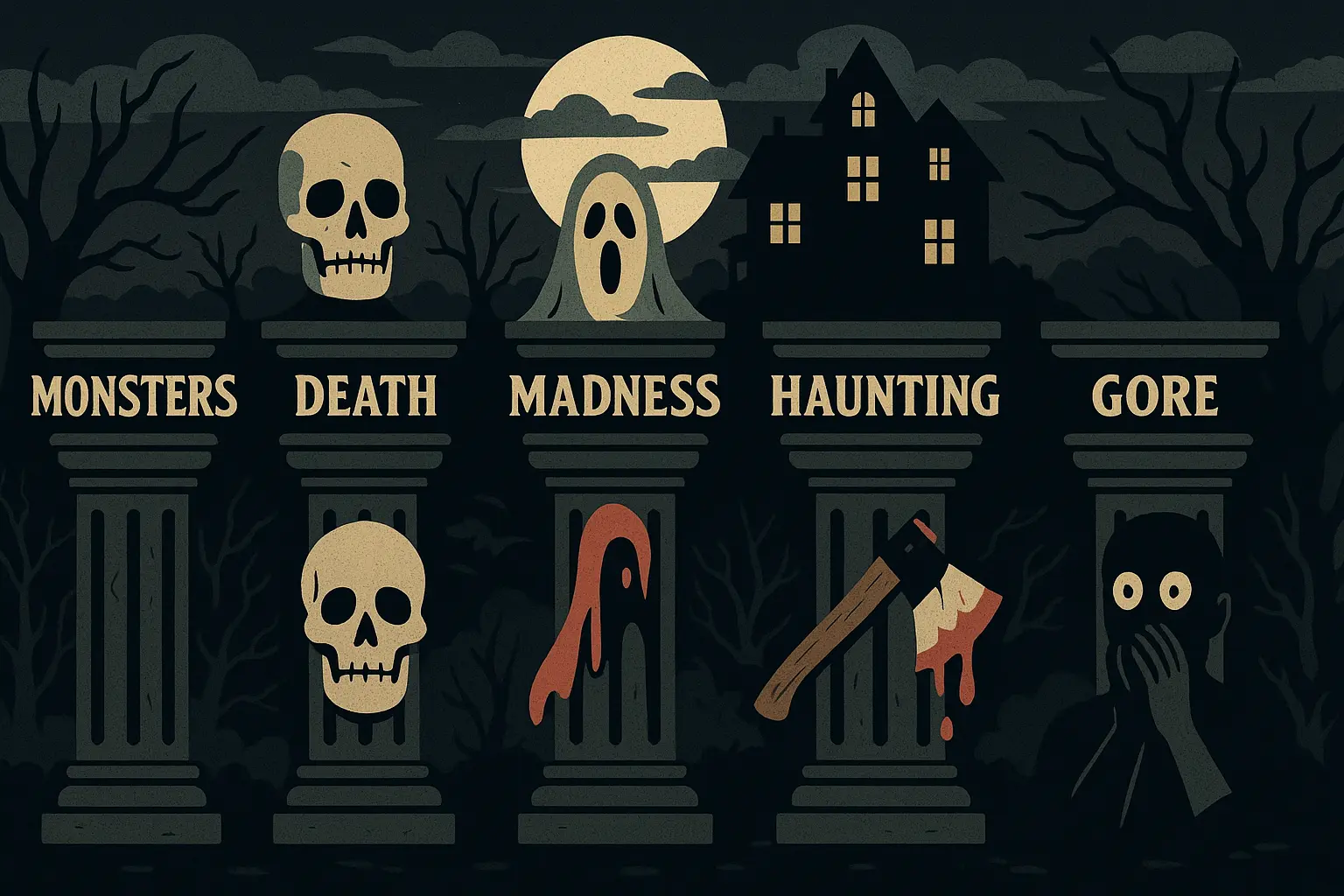
25 Bone-Chilling Two Sentence Horror Stories
Alright, here’s the main event. I’ve organized these into six categories that seem to really mess with people’s heads. Fair warning – don’t read these alone in a dark room. I made that mistake while writing this blog, and let’s just say I’ve been checking locks more often lately.
Each category taps into different fears, but they all share that ability to plant seeds of unease that grow in the dark corners of your mind. Some of these will probably bother you more than others – horror is super personal like that.
1. Childhood Innocence Corrupted
These five stories mess with our protective instincts toward kids, and honestly? They hit different. There’s something about children in horror that bypasses your rational brain and goes straight to that primal “protect the innocent” response.
The power of childhood-focused horror lies in how it corrupts the things that should be safe – imaginary friends, family, bedtime stories. When those get twisted, it feels fundamentally wrong in a way that stays with you.
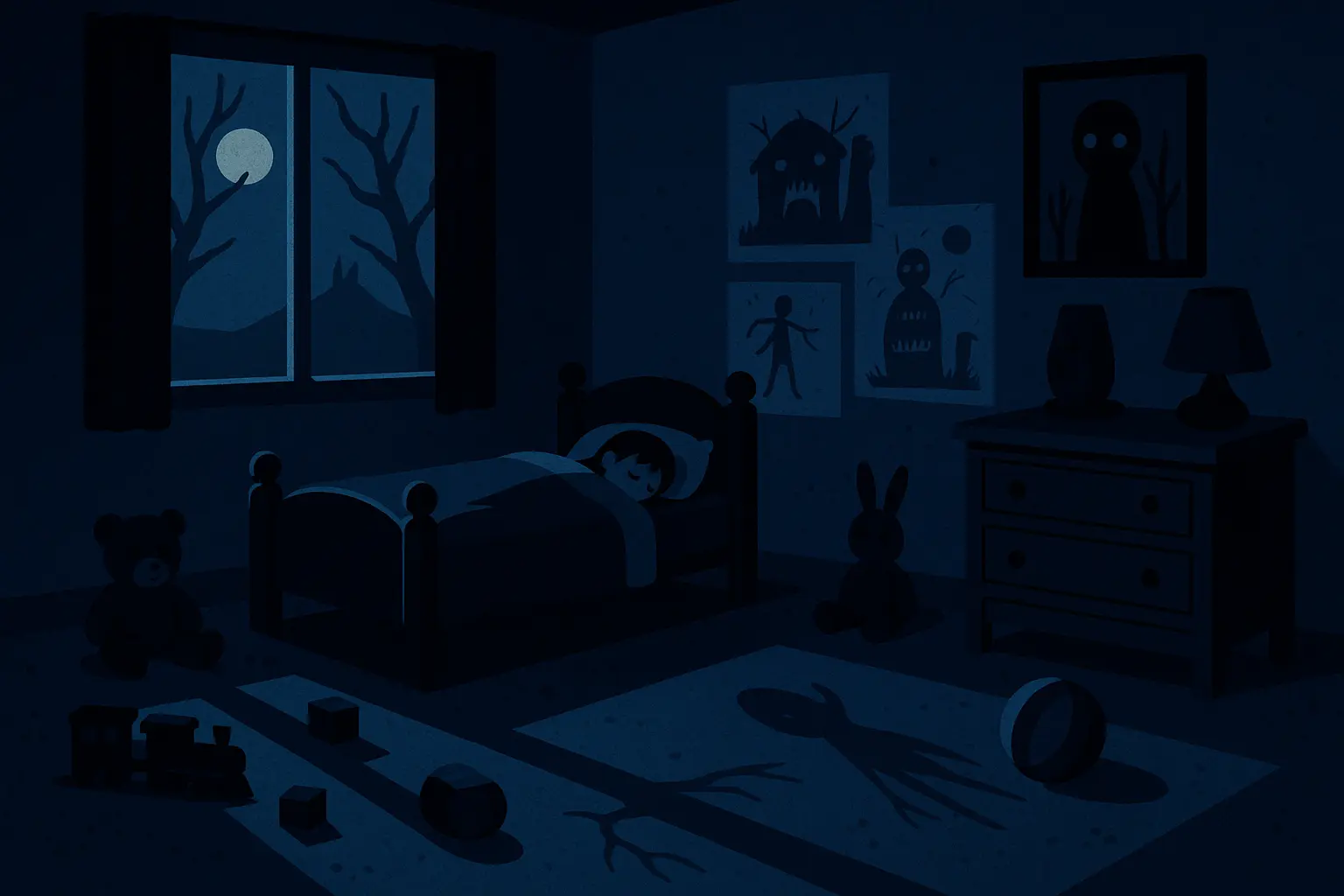
1. The Imaginary Friend’s Secret
“My daughter’s imaginary friend has been keeping her company every night since the accident. I just wish I could tell her that mommy can’t see ghosts.”
This one made me actually say “nope” out loud. The twist completely reframes everything – suddenly it’s not about childhood imagination, it’s about a dead mother watching her living family.
2. Midnight Playground Laughter
“The child’s laughter echoed through the empty playground at midnight. When I turned around, I realized I was the one laughing.”
Anyone else get goosebumps from this one? The idea of losing control of your own actions while thinking you’re observing someone else is deeply unsettling.
3. The Shadow Man in Family Portraits
“My son draws the same family portrait every day: mom, dad, him, and the tall shadow man. We’ve lived alone since his father died three years ago.”
I’m never looking at kids’ drawings the same way again. What if children really can see things we can’t?
4. The Monster Under the Bed
“She always insisted there was a monster under her bed that only came out when adults weren’t watching. Twenty years later, I found her childhood diary describing exactly what I do to children.”
This one’s messed up because it flips the entire monster concept. The real monster was the adult all along.
5. The Inherited Nursery Rhyme
“The nursery rhyme my daughter sings isn’t one I taught her. It’s the same song I heard the night before each of my siblings disappeared.”
Family trauma passing down through generations? Yeah, that’s nightmare fuel right there.
2. Technology and Modern Horror
These four stories tap into our weird relationship with technology. We’re basically attached to our devices, so when they start acting wrong, it hits way too close to home.
Pro tip: Don’t read the technology ones right before using your smart home devices. I made that mistake and spent way too long staring at my phone suspiciously.
6. Autocorrect Malfunction
“My phone keeps autocorrecting ‘help’ to ‘hello’ in my texts. I haven’t touched the keyboard in hours.”
This one bothers me because we’re all so dependent on our phones. What if they stopped working when you needed them most?
7. GPS Navigation Error
“The GPS kept saying ‘turn right’ even though there was no road. I should have realized I died in that crash twenty miles back.”
Classic “dead all along” reveal, but the GPS angle makes it feel fresh and terrifying.
8. Smart Home Surveillance
“My smart home assistant has been responding to conversations when no one asked it anything. Last night it whispered ‘I know what you did’ while I was sleeping.”
If you have an Alexa or Google Home, this one’s going to make you unplug it for a while.
9. Video Call with the Dead
“The video call with my grandmother went perfectly until I remembered she died last week. The thing wearing her face smiled and said ‘See you soon, dear.'”
The uncanny valley effect here is perfect – something familiar but fundamentally wrong.

3. Domestic Horror
These four stories mess with your sense of home as a safe space. Maybe skip this section if you’re home alone tonight – just saying.
Home should be where you feel most secure, which makes domestic horror particularly effective. When your own house becomes threatening, where can you possibly feel safe?
10. The Locked Basement Secret
“I always wondered why my husband insisted we keep the basement locked. Now I know why the previous owners sold the house so cheap.”
Personal confession: I actually checked my basement door after reading this one. Did I expect to find anything? No. Did I still check? Absolutely.
11. The Business Trip That Never Happened
“My wife has been acting strange since she came back from her business trip. I just found her suitcase, and she never left the house.”
The paranoia this creates about the people closest to you is genuinely unsettling.
12. The Growing Family Photos
“The family photos on our mantle show one more person each day. None of us recognize the figure that keeps getting closer to the camera.”
I had to read this twice because the twist hit so hard. Something’s infiltrating the family through their own documented memories.
13. Breakfast in Bed Without Hands
“My husband brings me breakfast in bed every morning without fail. I just wish I could remember what happened to my hands.”
This one’s deeply disturbing because it perverts something caring into something sinister.
4. Identity and Reality Horror
These four stories attack your sense of self and reality. When you can’t trust your own memories or reflection, what can you trust?
Identity horror strikes at the core of who we are. These stories make you question everything you thought you knew about yourself.
14. Nightmare or Reality
“I’ve been having the same nightmare every night for months about being buried alive. This morning I woke up with dirt under my fingernails.”
The physical evidence that dreams might be real experiences is genuinely terrifying.
15. The Surgery I Never Had
“Everyone keeps telling me how much better I look since the surgery. I never had surgery.”
This would make you question every conversation for weeks. What else don’t you remember?
16. The Independent Reflection
“My reflection started waving at me before I raised my hand. Now it won’t stop smiling.”
Classic mirror horror, but the escalating supernatural activity makes it particularly effective.
17. Century-Old Photographs
“I finally found someone who looks exactly like me in old photographs dating back 100 years. The problem is, I remember taking those pictures.”
Time loops or immortality horror – either way, your entire sense of identity crumbles.
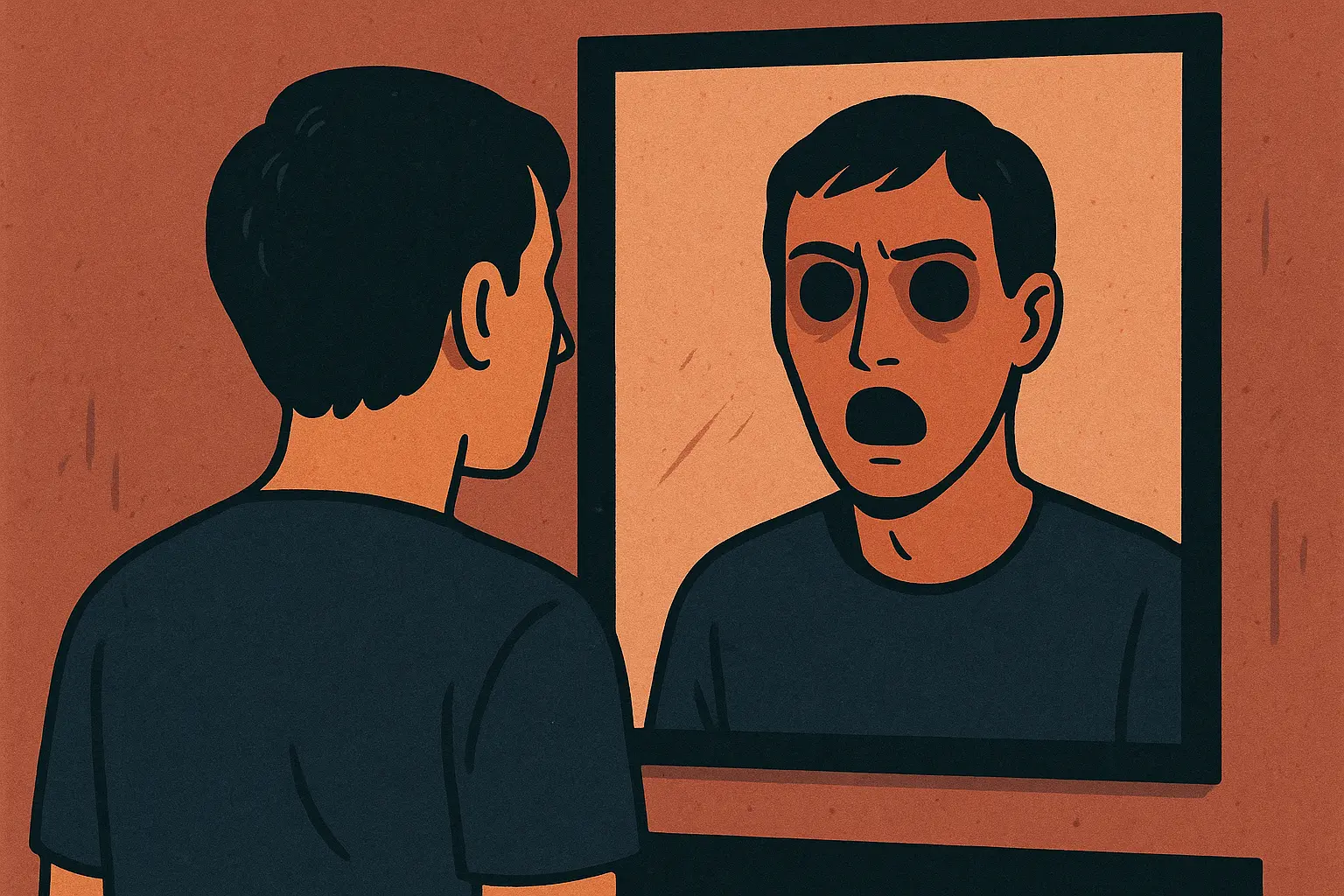
5. Death and the Afterlife
These four stories confront our ultimate fear – what happens when we die? Spoiler alert: according to these stories, it might not be peaceful.
Death represents the ultimate unknown, which makes it perfect horror material. These stories suggest consciousness might stick around after death in ways we never expected.
18. Watching My Own Funeral
“The funeral was beautiful, and everyone said such nice things about me. I just wish I could figure out why I’m still here watching.”
The confusion about continued existence after death creates genuine existential dread.
19. Grandfather’s Final Confession
“My grandfather’s last words were ‘Tell them I’m sorry for what I buried in the garden.’ We found the first body this morning.”
Family secrets revealed through deathbed confessions – and the implication there are more bodies to find.
20. Empty Graves at Dawn
“The cemetery groundskeeper said the fresh graves have been empty every morning for a week. That explains why my neighbors have been so quiet lately.”
Mass resurrection told through bureaucratic observation – the matter-of-fact tone makes it more unsettling.
21. Peaceful Death, Trapped Consciousness
“I died peacefully in my sleep surrounded by loved ones. So why am I still in this hospital bed watching them plan my funeral?”
The contrast between peaceful death and trapped awareness suggests something worse than dying.
6. Cosmic and Existential Horror
These four stories make you feel very, very small in a potentially hostile universe. Save these for daylight hours – trust me on this.
Cosmic horror works by emphasizing how insignificant we are against forces beyond human understanding. Sometimes the scale is so big it becomes abstract, but when it works, it really works.
22. The 50-Year Countdown
“Scientists announced they’ve been receiving the same radio signal from space for 50 years. It’s been counting down, and today it reaches zero.”
The idea that something’s been planning our doom for decades while we went about our daily lives is genuinely terrifying.
23. Something Eating the Stars
“The stars have been going out one by one, and astronomers can’t explain why. Last night, I realized something is eating them.”
Cosmic predators consuming the universe itself – that’s the kind of scale that makes human problems seem trivial.
24. The Basement Door to Nowhere
“I found a door in my basement that wasn’t there yesterday. Behind it, I can see my house, where another version of me is finding the same door.”
Infinite regression horror – the idea that this discovery repeats endlessly across parallel dimensions is mind-bending.
25. When Time Stopped at 3:33 AM
“Time stopped at 3:33 AM, but I’m still moving. Everyone else is frozen, except for the things that were never human to begin with.”
The revelation that protective mechanisms have failed, exposing us to normally invisible threats, is genuinely chilling.

Breaking Down What Makes Each Story Work
Look, I’ve read through these stories way too many times while writing this (probably not the best idea at 11 PM), and I’ve started to notice some patterns in what makes certain ones stick with you while others just… don’t.
Each story uses specific techniques to mess with your head, and understanding these patterns can help you appreciate why some two-sentence horror hits harder than others. The childhood corruption stories work because they exploit our protective instincts, while the technology horror taps into our digital dependence anxiety. These micro-horror pieces demonstrate the same narrative efficiency principles found in our collection of transformative short story examples, where every element serves the overall impact.
The childhood stories mess with our hardwired protective instincts. Story 1 works because it layers tragedy (the accident) with supernatural communication between dead mother and living child, while the living parent remains helplessly excluded. That’s not just scary – it’s heartbreaking.
Story 4 is particularly messed up because it completely flips the monster concept. We expect the monster to be some external threat, but the real predator was the trusted adult all along. That violation of trust and safety hits on a primal level.
Technology horror works because we’re all basically cyborgs now. Story 6 exploits our phone dependence by making the device that should help us call for help actively prevent it. Story 8 taps into smart home surveillance fears – these devices are always listening, so what if they start responding to conversations we didn’t know they were having?
Domestic stories corrupt our safest spaces. Story 10 works because it combines classic domestic mystery with real estate horror. The locked basement and cheap house price create anticipation, while the discovery suggests the previous owners fled from something terrible.
Story 13 combines routine domestic care with body horror. The caring husband’s breakfast service becomes sinister when we realize the narrator’s missing hands, suggesting imprisonment or worse.
Identity crisis stories attack our sense of self. Story 15 would genuinely make you question every conversation – if everyone sees changes you don’t remember, what else might you be missing? Story 17 creates time loop or immortality horror where the narrator’s presence in century-old photos they remember taking destroys any sense of normal human lifespan.
Death stories confront mortality while suggesting consciousness survives in unpleasant ways. Story 18 presents the ghost perspective on death – the confusion about continued existence creates existential dread about what happens after we die.
Cosmic horror emphasizes human insignificance. Story 22 works because it suggests something’s been planning our destruction for decades while we remained oblivious. Story 25 reveals that reality has protective mechanisms we never knew about, and they’ve just failed.

How These Stories Master the Art of Horror
The really effective ones hit you on multiple levels. Take that imaginary friend story – it’s not just “ooh, ghost scary.” It’s tapping into every parent’s worst nightmare about losing a child, mixed with that helpless feeling of not being able to comfort someone you love. That’s the stuff that keeps you thinking about it days later.
The psychological principles behind these effective horror pieces mirror the emotional resonance techniques discussed in our guide on the brain science behind effective storytelling, where understanding reader psychology becomes crucial for maximum impact. When you watch two-sentence horror content go viral on r/twosentencehorror, you’ll notice the most successful pieces follow these same psychological patterns.
The Stories That Really Get Under Your Skin
I’ve been ranking these based on how much they actually bothered me (yes, I kept notes like a weirdo), and the winners all do this thing where they make you question something you thought was safe or normal.
The ones about kids hit different because, let’s be real, we’re all programmed to protect children. When that safety gets flipped on its head – like the monster under the bed story where the narrator realizes THEY’RE the monster – your brain just goes “nope, this is all wrong” and can’t let it go.
The technology ones work because we’re all basically attached to our phones. That autocorrect story? I guarantee you’ve looked at your keyboard differently since reading it. I know I have.
Personal confession: I actually checked my basement door after reading story #10. Did I expect to find anything? No. Did I still check? Absolutely.
The domestic horror ones mess with me the most because they take your safest space – home – and corrupt it. Like that story about the husband bringing breakfast in bed but the wife has no hands? That’s not just scary, it’s deeply unsettling because it perverts something caring into something sinister.
The identity crisis stories work because they attack your sense of self. When you can’t trust your own memories or reflection, what can you trust? That surgery story where everyone says the narrator looks better but they never had surgery? That’s the kind of thing that would make you question every conversation for weeks.
Real talk: The cosmic horror ones are hit or miss for me. Sometimes the scale is so big it becomes abstract rather than scary. But that countdown story? The idea that something’s been planning our doom for 50 years while we went about our daily lives? That works because it makes our entire existence feel like we’ve been living on borrowed time.
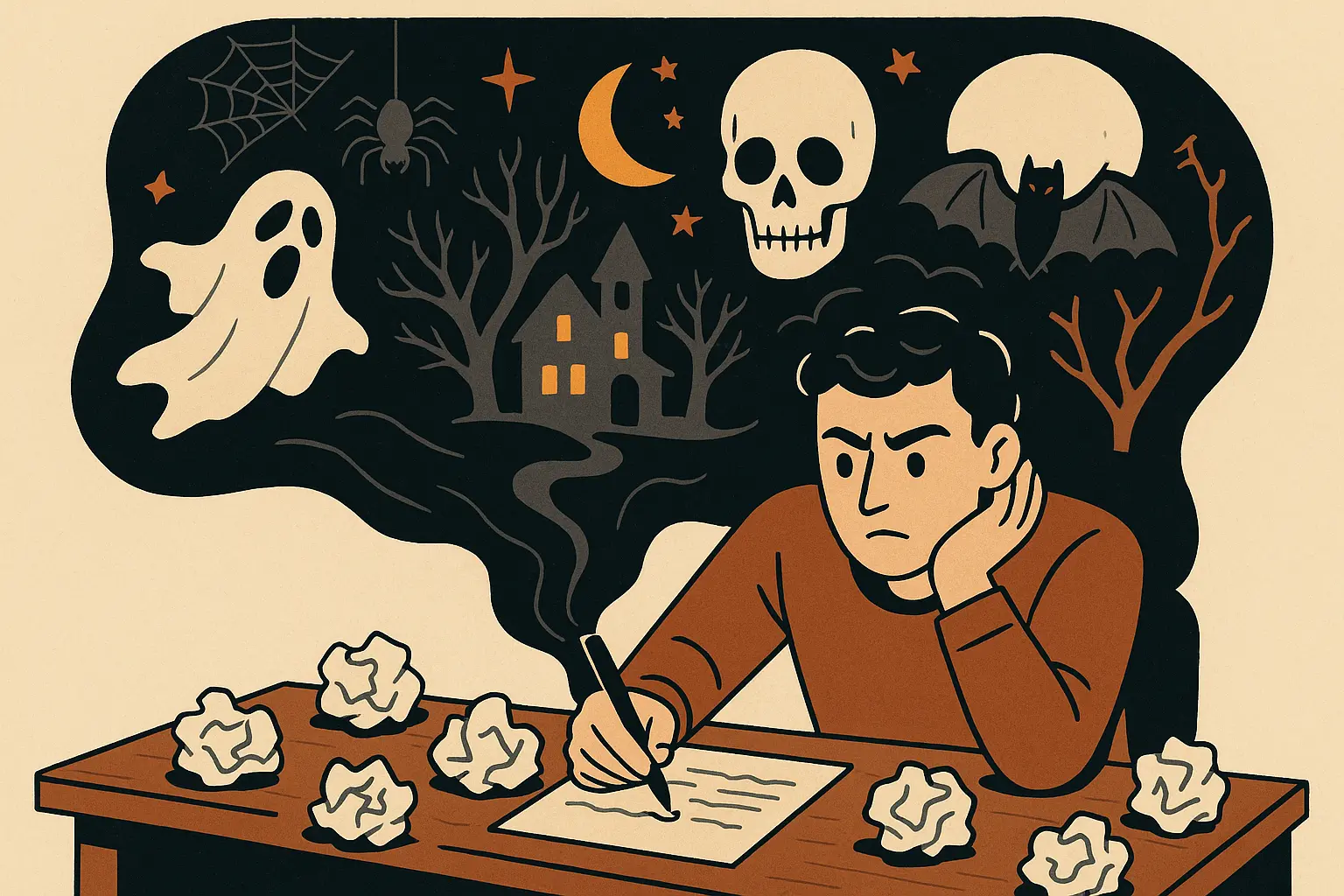
Crafting Your Own Two Sentence Nightmares
Okay, so you want to try writing these yourself? Fair warning – it’s way harder than it looks. I’ve probably written and deleted more failed attempts than I care to admit.
Writing 2 sentence horror requires a completely different mindset than traditional storytelling. You’re working with extreme limitations that force every word choice to be deliberate and impactful. The best two sentence horror stories emerge from writers who understand both the technical constraints and psychological principles that make micro-horror effective, similar to the diverse narrative approaches found in our comprehensive collection of transformative story examples that demonstrate various techniques for maximum reader impact.
Start With What Actually Scares YOU
Forget trying to shock people with gore or weird creatures. The stories that work tap into real fears. What keeps you up at night? What makes you double-check locks or avoid certain rooms in your house?
For me, it’s the idea of losing control – whether that’s my reflection acting independently or my phone doing things I didn’t tell it to do. Figure out your personal horror triggers and work from there.
Here’s what really messes with people:
-
Family stuff: Kids in danger, parents failing to protect, family secrets
-
Identity crisis: Not trusting your own memories, body doing things without permission
-
Death anxiety: What happens after, consciousness surviving in bad ways
-
Technology fears: Devices malfunctioning when you need them, AI getting too smart
-
Home invasion: Safe spaces becoming dangerous, familiar things acting wrong
-
Cosmic dread: Being insignificant against vast, hostile forces
The Setup-Payoff Game
Your first sentence needs to sound completely normal. Boring, even. “My daughter draws the same family portrait every day.” See? Nothing scary there.
The second sentence is where you drop the bomb that makes the reader go back and reread the first one with completely different context. “We’ve lived alone since his father died three years ago.” Wait, what? Who’s the shadow man then?
Pro tip: If your twist doesn’t make the reader want to immediately reread the first sentence, it’s probably not strong enough.
Don’t Over-Explain
This was my biggest mistake when I started trying to write these. I wanted to explain exactly what the monster looked like, or how the supernatural stuff worked. But that kills the effect.
The locked basement story works because we never find out what’s down there. Our imagination fills in something way worse than any description could provide. Trust your readers’ brains to be their own worst enemy.
The best ones give you just enough info to be scared, but leave room for your brain to fill in the really terrifying details. Like that autocorrect story – we don’t know WHY the phone is malfunctioning or WHO might be controlling it. That mystery is what makes it stick with you.
Common Mistakes That Kill the Effect
-
Too much gore: “Blood everywhere” isn’t scary, it’s just gross
-
Trying too hard to be clever: If you have to explain your twist, it’s not working
-
Copying popular formats: We’ve all seen the “I died but I’m still here” story a million times
-
Weak first sentences: If your setup is boring, your payoff won’t matter
-
No emotional connection: Shock without emotion is just noise
Honest moment: I’ve written probably fifty of these, and maybe five are actually good. The rest are either too obvious, too confusing, or just not scary. That’s normal. Keep trying.
The best advice I can give? Read your story to someone else. If they don’t get goosebumps or at least go “oh, that’s messed up,” back to the drawing board.
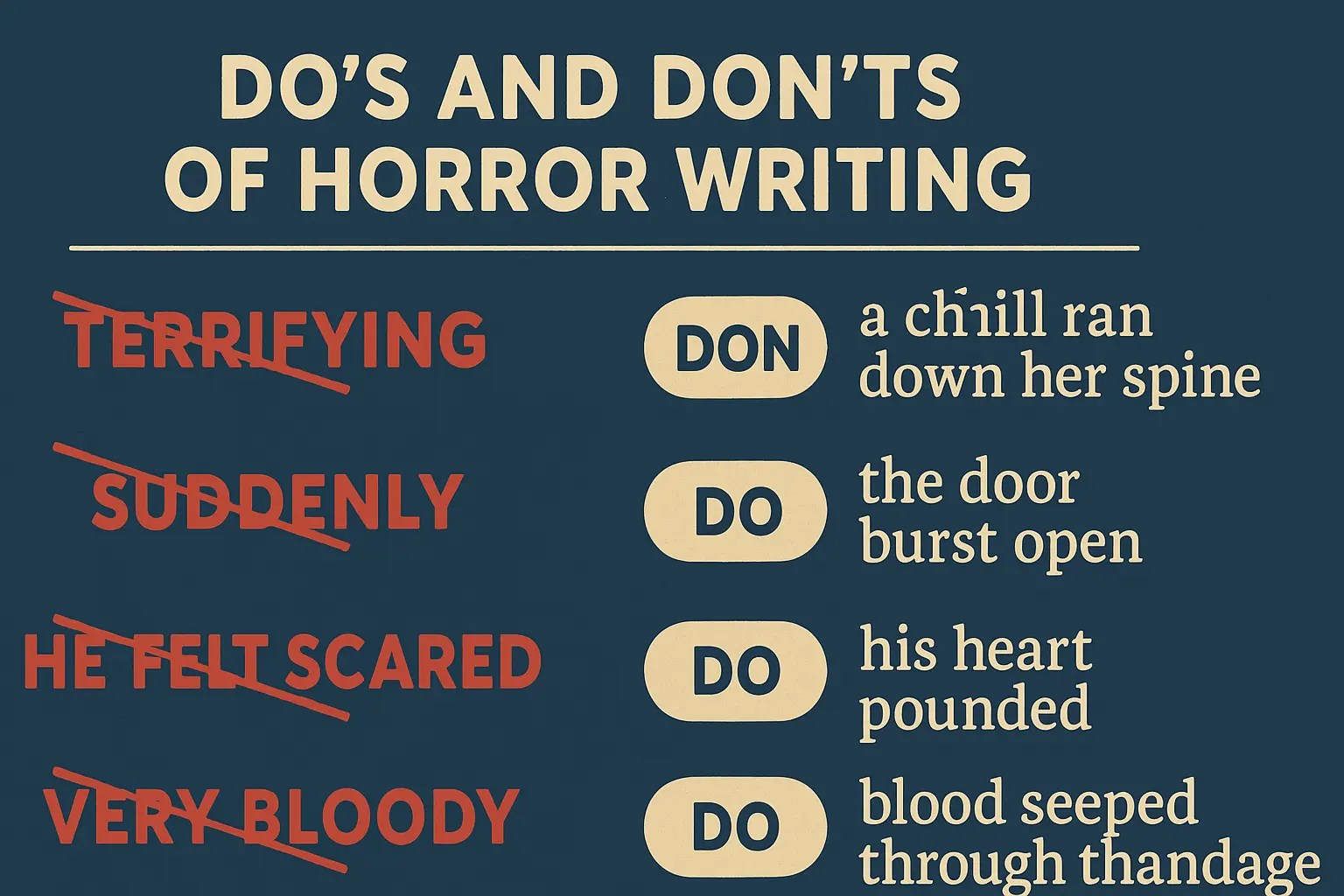
How can Nairrate help you overcome these creative challenges? Our AI-powered Story Starters Generator and Story Prompt Generator are specifically designed to help writers break through creative blocks and discover fresh angles for their horror writing. Whether you’re struggling to find that perfect opening line or need inspiration for twist endings that truly recontextualize your setup, Nairrate’s tools can provide the creative spark you need to craft memorable two sentence horror stories that stand out from the thousands circulating online.
Final Thoughts
Here’s the thing about two-sentence horror stories – they’re like potato chips. You think you’ll just read one, and suddenly it’s 2 AM and you’ve gone through hundreds of them on Reddit.
What I love about this format is how democratic it is. You don’t need to be Stephen King to write something that genuinely scares people. You just need to understand what makes humans tick and how to subvert their expectations in exactly the right way.
The 25 stories I shared here aren’t necessarily the “best” ones ever written (that’s subjective anyway), but they’re the ones that demonstrate different techniques and tap into different fears. Some probably scared you more than others, and that’s totally normal. Horror is personal.
Look, not all of these will scare everyone – horror is super personal. Some of these might seem cheesy to you, and that’s totally fine. I’ll admit, a few of these kept me up last night, while others just made me appreciate the craft behind them.
My challenge to you: Try writing one. Just one. Start with something that actually bothers you – a weird sound in your house, a strange text, whatever – and see if you can turn it into two sentences that would make someone else uncomfortable.
Which category freaks you out the most? I’m definitely team ‘childhood corruption’ – something about kids in horror just hits different. The domestic ones mess with me too because they corrupt the spaces where we should feel safest.
The temptation to add ‘just one more sentence’ is real, but that defeats the whole point. Finding that perfect twist ending without making it too obvious? Yeah, that’s the challenge. Writing these is way harder than it looks – I’ve probably deleted a hundred attempts myself.
And hey, if you write something that keeps you up at night, you’ll know you’ve succeeded.
Fair warning though – once you start noticing the patterns in these stories, you’ll never read them the same way again. You’ll start seeing the setup-payoff structure, the ambiguity techniques, the fear triggers. It’s like learning how magic tricks work – still entertaining, but the mystery is gone.
Final confession: I’m definitely going to be more careful about what I read before bed from now on. Some of these stories have a way of creeping back into your thoughts at exactly the wrong moment.
Anyone else immediately think of their own basement after reading #10? Or check their phone’s autocorrect settings after #6? That’s the real power of micro-horror – it plants seeds of unease that grow in the dark corners of your mind.
Sweet dreams, everyone. 😈



Add comment